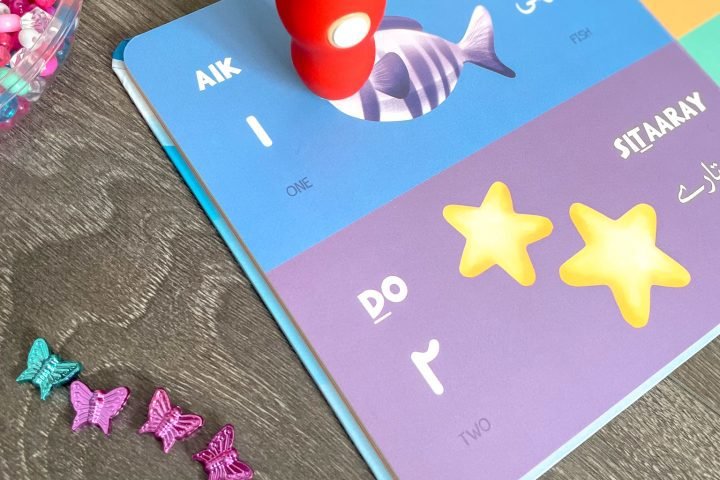As South Asian languages grow in Canada, parents want more learning options for kids

Like many immigrants in Canada, Masooma Aftab is concerned about keeping her native language alive in the family.
The Canadian-Pakistani mother said as her son started going to school, she noticed that his conversational skills in English began taking precedence over Urdu.
Seeing a culture gap and a lack of language resources available, she and her husband decided to take matters into their own hands and launch Kids Bolo to help children in the West learn Urdu.
“We noticed when we released this to the general public that apparently there was a gap that other parents were also seeing and feeling,” Aftab told Global News.
“So that was a major challenge for us as parents, kind of figuring out how do we balance English and Urdu in his daily life in a less overwhelming way,” the Pickering, Ont., resident added.
Since September 2020, the couple, who immigrated from Karachi in the ’90s, have published nine Urdu-English books and come up with an innovative talking pen and are also offering conversational virtual classes in Urdu.
“We’re continuously finding different ways and innovative ways to kind of reel the kids back into their culture,” Aftab said.
It’s a “work in progress” and a “balancing act,” the mother of two says, and many other South Asians – the largest visible minority Canada – are in a similar boat.
In Canada, there has been a large increase in the number of people who predominantly speak South Asian languages at home, according to the latest census data released last week.
Punjabi and Urdu were ranked second and seventh, respectively, as the most commonly spoken non-official languages in the country, the 2021 data from Statistics Canada showed.
With immigration driving the growth in South Asian languages, according to StatCan, parents and educators say schools can play a bigger role in promoting them and more options should be available.
“I do not find that there is much support with respect to learning your language or finding a way to provide that support,” said Harpreet Kaur Neelam, a teacher in Oakville, Ont., and an advisory board member for the World Sikh Organization of Canada.
In Ontario, students are required to study French as a second language from grades 4 to 8.
In British Columbia, second language instruction is mandated from grades 5 to 8 and specifically in Vancouver, French, Spanish, Mandarin and Japanese are only offered as second language options.
For parents wanting to teach their children languages not part of the regular curriculum, most school boards across Canada offer extracurricular language classes, usually on the weekends.
Pakistani parents Umair and Ayesha Hashmi, who moved to Canada in October 2021, are hoping to enrol their seven-year-old son in an Urdu language class in Mississauga, Ont., on Saturdays offered by the Peel District School Board.
Ayesha Hashmi said her main concern is her son, who was born in the United States and went to school there as well as in Pakistan, losing fluency in his mother tongue.
“We are definitely seeking ways so that he can at least maintain his accent and fluency in Urdu,” she told Global News.
Her husband, Umair, said striking a cultural and religious balance in a western society can be difficult.
“There’s so much you can put on a young child in terms of languages and that’s a challenge for parents, specifically, immigrant parents,” he said.
As a Nepali immigrant and settlement worker, Richa Karkee is all too familiar with trying to integrate into a foreign country and the importance of staying connected with her language and roots.
“There is a duality of culture in the immigrant community, and children are often caught between mainstream Canadian culture and their home culture,” said Karkee, manager of violence prevention, gang prevention and refugee youth services at DIVERSEcity, a B.C-based settlement agency for newcomers.
“As immigrants, we often revert back to our first language when discussing something difficult or to express joy. That’s why it’s so important to provide first-language support in services where we talk about feelings, emotions and safety.”
Aside from the international language classes, school boards can do more by including them in the official curriculum so children don’t have to take extra courses on weekends, Neelam said.
“If you are in a highly populated school of, say, Punjabi-speaking kids, then that should be put into the school timetable,” she said.
Umair Hashmi said he would like to see weekly sessions, group discussions and occasional courses in schools, which can be helpful for children to maintain some level of fluency.
“Obviously, reading, writing might be a challenge, but at least speaking, they should be able to do that,” he said.
by Global News







